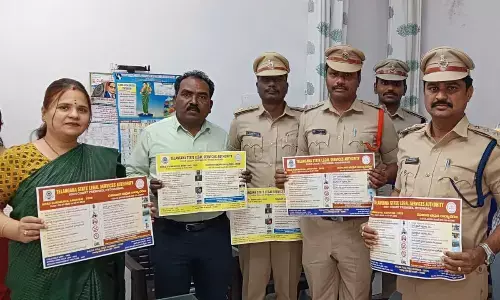Energy conservation techniques

With the increase in population, conservation of non-renewable energy has become important. Domestic sector is the major consumer of energy in every economy. Hence large inventions and innovations have replaced conventional methods to save energy.
With the increase in population, conservation of non-renewable energy has become important. Domestic sector is the major consumer of energy in every economy. Hence large inventions and innovations have replaced conventional methods to save energy.
Compact Fluorescent Lamps (CFL) replaced incandescent bulbs. Open utensils cooking have been replaced with pressurised steam cooking and of course solar cooking. Other energy efficient devices which can be used for energy conservation are diamond hotplate, PRP bullock cart, tubelight with electronic ballast device which helps in reducing energy consumption by limiting the amount of electric current in an electric circuit.
Many energy efficient houses are made to save energy. Different types of new technologies are used to make them energy efficient. Some examples of such energy efficient buildings are as follows-
Eco house
It was constructed in the mid-seventies. It was equipped with a solar cooker and a multifeed biogas plant. Rain water harvesting is also used in this house. Aroof mounted wind generator was also contemplated but not installed. The following technologies were used in this house-
- Rainwater harvesting with underground cistern
- Roof integrated solar water heater
- Window mounted retractable solar cooker
- Multifeed biogas plant, usable as septic tank, if required
- Three different types of experimental roofs like- hollow concrete tiles, Prefab brick jackarches, Madras terrace roof
- Design for ventura (ventilation via inner courtyard)
- Ventura system of using high and low pressure for sucking in cool airand pushing out hot air through roof ventilator
The Auroville visitors centre
It is a public building constructed in Pondicherry in 1989. Several cost effective and alternative technologies had come about by mid-eighties. Attempts to integrate everything in a functional and pleasing environment were quite successful and won the Hassan Fathy International Award in 1992. The following technologies and equipment were used during its construction.
- Compressed earth blocks
- Ferro-cement roof channels and building elements
- Solar chimneys
- Wind pump
- Water solar PV pump
- Wind generators
- Decentralized waste water system.
Solar kitchen
The community kitchen was constructed for preparing 2000 meals a day. This concept began to be implemented in 1994. Since solar energy is abundant in southern India, using steam as the heat transfer medium for preparing meals was the obvious choice. Solar kitchen possesses the following features:
- Compressed earth blocks
- Solar bowl concentrator of 15m diameter.
- Scheffler community cooker concentrator.
Energy Conservation
Energy conservation should be considered in any comprehensive land use planning process.A variety of heating sources like fuel oil, gas, wood, electricity, the sun and coal can be used in homes and business houses. Substantial economic savings can be realised through energy conservation.
Effective use of land could prove to be a good way of energy conservation. The design of a town should be such that developmental densities should be highest towards the centre of the town, which is served by municipal water and sewer. Outlying areas should have much less construction. A township can be oriented towards becoming eco-friendly only with the cooperation of the inhabitants.
A township may have structures of echo-friendly architecture but unless the inhabitants resolve and practice energy conservation and eco-friendly way of life, the purpose of energy efficient town would be defeated. Education, eco-friendly behaviourand ecologically sound infrastructure can truly create energy efficient green towns.
Education
Education is the best way of creating awareness for energy conservation. A branded programme can be created with a title and logo to imprint the conservation message on alltownship communities and documents. Energy conservation information should be presenton the websites, local cable access station.
Changing behaviour
For the right attitude towards energy conservation, residents should be encouraged to drive less, walk and bike more by installing bike racks at public buildings. The best way to conserve energy is to switch off the lights while leaving the room, shut down the computers when not in use. When appliances are not in use they should be unplugged. Lower thermostats in the winter and raise them in the summer. Household and business wastes should be recycled. It will positively result in energy conservation.
Greening our infrastructures
Light bulb should be replaced with the energy efficient compact fluorescent bulbs as they use 75 per cent less energy and last up to ten times longer than standard incandescent bulbs.
Energy Conservation
Appliances and office equipments should be replaced with energy star rated units. It will lower energy usage and costs.
Green buildings
Currently this method is expensive. But energy conservation elements that are not higher in cost than that of traditional products can be used.Besides, the setting, design and construction of buildings strongly influence the amount of energy needed for heating, cooling as well as for lighting. Proper design, building, orientation, construction, and landscaping provide opportunities for energy conservation measures such as passive solar space, domestic hot water heating mechanism, natural lighting and photovoltaic electricity production. Besides, renewable energy sources should be used more instead of non-renewable energy sources.
- Building designs and construction practices should promote energy conservation
- Use of renewable energy sources should be encouraged
- Energy conservation for local transportation needs should be facilitated
- Awareness should be raised among people about conservation of energy sources
- Promote community self-sufficiency and independence with respect to energy levels and encourage the use of the least environmentally damaging sources of energy
- Town should minimise its energy consumption.















